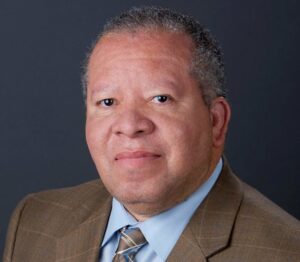Exploring New Pathways to College Completion
Tue, 18 October, 2016 at 2:59 pmExploring new pathways to college completion

While, society widely accepts the importance and value of higher education as a public good, fewer than 40 percent of our nation’s undergraduates complete a college degree within six years, according to the National Center for Education Statistics. This reality places pressure on college campuses to improve time to completion for their students.
Addressing the lengthy six-year timeline begins with a broad focus on increasing college completion rates. According to a report by California Competes, California needs to produce 11.9 million degrees – inclusive of bachelor’s degrees, associate’s degrees, and one- and two-year certificates – by 2025 to remain economically competitive. Currently, however, the state is slated to produce only 9.5 million degrees, resulting in a degree gap of 2.4 million.

But higher education institutions can narrow or close the degree gap by accelerating student pathways to completion.
Taking six years to complete college also contributes to higher student debt. Additional time spent earning a degree versus earning an income, along with the rising costs of college itself, reinforce doubts among many potential students as to whether they should aspire to earn a college degree. According to the Institute for College Access and Success (TICAS), 55 percent of 2014 California graduates had college loans, with an average of $21,382 per borrower. While this is lower than the national average, the high cost of living puts Californians at risk of exceeding the national average soon.
The California Legislative Analyst’s Office (LAO) is studying the issue more closely. In analyzing various options to reduce debt, the LAO is evaluating the advantages of the consolidating existing financial aid programs into one entitlement grant program that takes into account the total cost of college attendance, including tuition and fees, books and supplies, room and board, and transportation.

That includes the Cal Grant Program, Middle Class Scholarship, campus-based financial aid awards, and the California Community College Board of Governors Fee Waiver. The intent is to establish options that – once fully phased in – can ensure every student will be able to cover college costs with an appropriate family contribution for middle and higher income families, earnings from a part-time job, and federal financial aid for eligible students. While this is an important first step, the jury is still out on how financial aid consolidation into a single entitlement grant will remedy cost increases while maintaining equity throughout the state.
As higher education leaders, we believe the state’s colleges need to focus on key areas that directly contribute to a student getting a degree. And luckily, potential solutions are plentiful:

- Developing a system for improving and expanding outreach to adult learners;
- Increasing access to college credit courses for high school students so they can earn their associate degree or credits toward a degree while completing high school;
- Promoting full-time attendance, particularly at community colleges and California State University, as studies demonstrate full-time students are more likely to complete college;
- Promoting multiple measures – e.g. considering a student’s prior work experience, GPAs or SAT exam scores or assessment algorithms – to assess college students’ math and English abilities and help reduce time-consuming, costly and sometimes ineffective remedial education;
- Encouraging institutions to implement “cultural competence” in the curriculum that will support traditionally underrepresented students, support diversity, social justice and achieve equity on campus and help increase retention rates;
- Helping to provide transportation and housing to students by leveraging partnerships and developing networks of support for low-income students, especially those who are experiencing homelessness, a population that makes up roughly 10 percent of CSUs students;
- Implementing registration processes that allow students to enroll for an entire academic year at one time – analogous to high school course registration – which encourages students to develop yearlong academic plans rather than the standard college registration process of one semester or one quarter at a time.
Some of these strategies are low-hanging fruit; others require more time and resources to make happen. However one thing is sure: if implemented, more students – and particularly more underserved students – will find themselves with degrees in hand.
The promise of California’s Master Plan for Higher Education was that college would be a benefit guaranteed to all Californians who sought to pursue it. If the impending gap in degrees is not addressed as a priority, we will be conscribing at least 2.4 million Californians to a future in which they will not contribute as fully or as meaningfully to their communities or to the state’s varied regional economies.
•••
Lande Ajose is senior vice president for the postsecondary and transitions to work program area at the The Opportunity Institute. Harry LeGrande is vice chancellor for student affairs at the University of California, Berkeley. Jamillah Moore is president of Cañada College. Wm. Gregory Sawyer is vice president for student affairs at California State University, Channel Islands. The authors are all members of the California Student Aid Commission.
The opinions expressed in this commentary represent those of the authors. EdSource welcomes commentaries representing diverse points of view. If you would like to submit a commentary, please review our guidelines and contact us.
source: https://edsource.org/2016/exploring-new-pathways-to-college-completion/570743 Posted in: President, Jamillah Moore, Office Of The President
